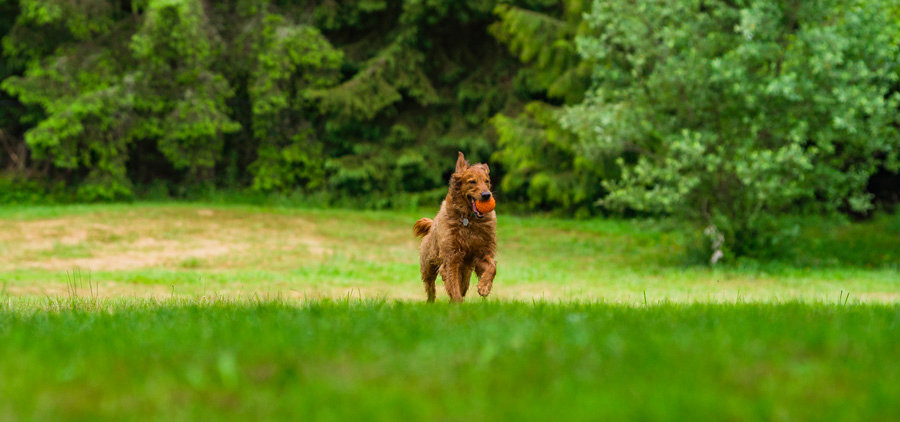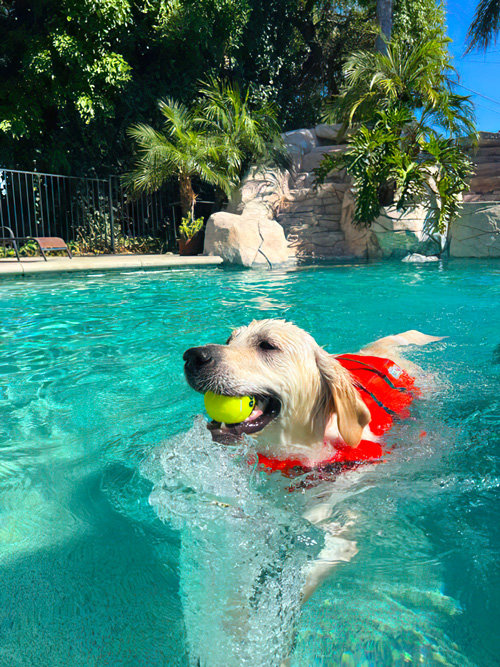How to Deal With Puppy Potty Training Regression

You thought those dreaded middle-of-the-night potty breaks were over. You were finally free from cleaning up puppy puddles. Then, suddenly, your furry friend starts having accidents again. It's frustrating, right? This puppy potty training regression is more common than you think. Don't worry; we'll help you get your pup back on track. We'll cover the common causes, offer practical solutions, and give you actionable steps to tackle this challenge together.
While potty training regression can be incredibly frustrating, it can also be fixed with the right approach. Take a deep breath and read on! Here’s how to handle your older puppy or fully grown adult dog peeing and pooping inside.
What is potty training regression?
Simply put, potty training regression is when a dog who’s already been house trained—and who previously seemed successful at holding their bladder and bowels for consistent intervals—suddenly starts using the bathroom inside again. These accidents might be triggered by specific things (more on that in the next section) or seem to come out of nowhere.
While potty training regression is unpleasant, the behavior is actually a common issue. Many owners report their older puppies regressing to an earlier phase of their house training abilities between four months to one year of age. Elderly dogs often struggle with incontinence, too. There are a variety of reasons for the behavior.
Most pet parents have experienced at least some level of house training regression—and we’ve all made it through! You’ve got this.
Key Takeaways
- Regression has many causes, and most are easy to fix: From puppy brain farts to changes in routine, most potty training regressions are temporary. A vet visit can rule out medical issues, especially for adult dogs.
- Clean up accidents completely: Enzymatic cleaners are your best friend. They eliminate the lingering scent of past accidents that encourages repeat offenses in the same spot.
- Go back to basics: Pretend your dog is a brand-new puppy! Consistent routines, frequent potty breaks, rewards for successes, and confinement when you can't supervise are key.
How to handle potty training regression
You should treat potty training regression the same way you’d go about house training a newly adopted adult dog:
- Understand the cause of your companion’s indoor accidents.
- Eliminate the scent of previous messes around your home.
- Go back to a basic house training process.
You’ll be able to rebuild healthier habits in no time!
Developmental Stages and Hormonal Shifts
Just like human children, puppies go through various developmental stages that can impact their behavior, including their potty training habits. Hormonal fluctuations, especially during adolescence, can sometimes lead to temporary setbacks in house training. If your pup is going through a growth spurt, they might seem a little more forgetful than usual—and that includes remembering their potty training.
Regression Around 4-5 Months
Many owners observe a regression in potty training around the four- to five-month mark. This can be a confusing time, as the puppy may have seemed to grasp the concept of house training previously. This regression often coincides with a period of rapid physical and mental development. Essentially, your puppy’s brain is working overtime to grow, which can sometimes mean taking a temporary step back in other areas.
Regression Around 7-9 Months (Especially in Males)
Another common period for regression is between seven and nine months, particularly in male dogs. This is often linked to increasing testosterone levels as they reach sexual maturity. As experts explain, regression is normal at various ages (4+, 7+, and 10+ months) due to these developmental changes and hormonal shifts. Just as with the earlier regression phase, consistency and patience are key to getting back on track.
Inconsistent Training and Rewards
Sometimes, potty training regression isn't related to developmental stages at all. It can be a direct result of inconsistent training or rewards. It's easy to become less diligent with reinforcement once your dog seems reliably house-trained. However, inconsistent rewards can lead to confusion and accidents. Make sure you keep rewarding your dog for going potty outside, even if they've been accident-free for a while. This reinforces the desired behavior and helps prevent regression.
Stress, Anxiety, and Emotional Factors
Stress and anxiety can play a significant role in potty training regression. Changes in routine, a new pet or family member, moving to a new home, or even loud noises like fireworks can be stressful for dogs. Stress and anxiety can manifest in various ways, including accidents inside the house. Consider booking a Sniffspot to give your dog a safe and enriching place to de-stress. If you suspect stress is the culprit, try to identify and address the underlying cause. Creating a calm and predictable environment for your dog can help reduce anxiety and minimize accidents.
Medical Reasons for Regression
In some cases, potty training regression can be a sign of an underlying medical issue. Conditions like urinary tract infections (UTIs), incontinence, or inflammatory bowel disease can cause a dog to have accidents. If your dog suddenly starts having accidents and there doesn't seem to be a behavioral reason, it's crucial to consult your veterinarian. A vet can rule out any medical conditions and provide appropriate treatment if necessary.
Teething and Its Impact on Potty Training
Teething can be a surprisingly disruptive period for puppies, and it can sometimes affect their potty training. The discomfort and pain associated with teething can make it difficult for puppies to hold their bladder or bowels for as long as they usually would. Teething can cause potty training setbacks, but with consistent training and positive reinforcement, puppies typically get back on track once the teething phase is over. Providing safe chew toys can help alleviate teething discomfort and potentially minimize potty training disruptions.
Step one: Try to understand why your previously house-trained dog might be having accidents
We know it’s aggravating to have to clean up your dog’s messes, especially when you were so excited to think all that scrubbing was in the past. No matter how miserable your pet’s bathroom habits are making you, though, you owe it to them to try to understand what’s going on behind their behavior.
While potty training regression can be a normal part of your dog growing up without any clear cause—puppies have a lot going on and might simply be scatterbrained from time to time—it can also be the direct result of a physical problem or change in routine.
Here are some questions to help you figure out the reason behind your dog’s recent accidents. Was it a one-off incident? Or do you have a bigger problem on your hands?
For young dogs: Did you increase your house training criteria too soon?
A general rule of thumb is that puppies can hold their bladders one hour for every month of age. A four-month-old puppy can typically wait four hours while a six-month-old puppy can do six and so on, all the way up to the 8-10 hours we might expect from an adult dog.
That’s just a guideline, though:
- Small breeds have tinier bladders and higher metabolisms than large breeds do. Because of this, they might need more frequent bathroom breaks (even more often than one hour for every month of their age).
- Some dogs’ brains and bodies develop more slowly than others. If you’ve been increasing the periods between your dog’s bathroom breaks without waiting for them to have consistent success at the previous level, you might be moving too quickly.
- When in doubt, leave a shorter time between breaks.
For young dogs: Have you been inconsistent with your potty training process?
It’s also possible that you’ve recently given your dog some mixed signals—or perhaps missed a few regular bathroom breaks—that have resulted in them feeling confused about their potty routine. Your pup might not know when and where they’re supposed to go.
Don’t worry: This doesn’t mean you’re doing a bad job. Owning a dog is a lot of work, and mistakes happen to the best of us!
Just take a few minutes to think about your house training routine. Is everyone in your family on the same page? Are you offering your pup frequent breaks? Is there a chance you haven’t noticed signals that your dog needs to go out? You might just need to clean up your communication.
For dogs of all ages: Could your pet have a medical condition like a urinary tract infection?
Even if your dog has successfully practiced holding their bladder and bowels for months on end, a sudden illness might prevent them from waiting to go until they’re outside. This is especially likely if they’ve soiled their bed or favorite sleeping spot, since canines don’t like to use the bathroom where they rest (more on that later).
Common health conditions that can cause house training accidents include:
- Urinary tract infections
- Kidney or bladder stones
- Bladder inflammation
- Kidney disease
- Genital skin infections
- Diabetes
- Gastrointestinal issues or upset
- Inflammatory bowel disease
- Canine cognitive dysfunction in older dogs (often called “doggy dementia”)
If you think your dog might be suffering from any of the above, get in touch with your vet right away! When potty training regression happens to an adult dog (older than a year) with no other obvious variables, there’s a good chance it’s driven at least in part by medical issues.
For dogs of all ages: Has your pet experienced any big life transitions?
Stress can have a range of effects on our dogs’ bodies, making it more difficult for them to regulate their nervous systems, process new information, and—you guessed it—control their bladder and bowels.
Your dog might be feeling overwhelmed if you’ve recently:
- Moved into a new house
- Brought another pet home
- Changed your work schedule
- Lost a family member (especially their favorite person)
- Experienced a sudden change in season
- Or so on
In these instances, our dogs aren’t using the bathroom indoors to “get back at us.” They’re just confused and a little uncertain.
You should be able to clear up their accidents in no time by:
- Getting back to a consistent routine with basic training steps.
- Building their confidence through training and play.
- Providing regular exercise and appropriate enrichment activities to alleviate stress.
For dogs of all ages: Are your pet’s accidents linked to other behavioral problems like anxiety?
Sometimes our dogs experience chronic mental health struggles. Separation anxiety, past trauma, and more can contribute to house training problems.
Has your dog recently had an intense bad experience? Maybe they were attacked on a walk or accidentally left alone for too long while you dealt with another emergency. Are there any new stimuli in their regular bathroom spots? Have they been startled by inclement weather while trying to go outside?
If you think long-term separation anxiety or another mental health problem could be the cause of your companion’s potty training regression, don’t worry—you’re not alone! Consider setting up an appointment with a certified vet behaviorist to evaluate what you should do next.
Step two: Eliminate the scent of past accidents
Dogs have a natural instinct to relieve themselves where they’ve used the bathroom before. This is the reason why many adult pets choose to pee and poop in the same corner of their yard or block of their walk each day—and it’s also why one or two accidents inside your home can quickly turn into dozens more if not properly cleaned up. Urine is one of the strongest pet odors.
It’s important to thoroughly scrub all potty messes with an enzymatic cleaner. These special enzymes will remove all traces of previous markings! Since urine can have a powerful, pervasive smell to our dogs’ noses, regular soap and water won’t cut it here.
The Importance of Enzyme Cleaners
It’s important to thoroughly scrub all potty messes with an enzymatic cleaner. These special enzymes remove all traces of previous markings, which is key for discouraging repeat offenses. Regular soap and water won’t cut it here, since urine has a powerful, pervasive smell to our dogs’ noses. As we discussed in our post on how to house train an adult dog, dogs have a natural instinct to relieve themselves where they’ve gone before. Even one or two accidents can quickly turn into many more if not properly cleaned.
Think of it this way: you’re not just cleaning the visible mess; you’re erasing the invisible, olfactory “welcome mat” your dog has unintentionally laid down.
Step three: Go back to puppy potty training basics
If you’ve determined that your dog’s house training regression is not caused by underlying medical conditions or anxiety that you need to address with a certified professional, then your way forward is simple: Let go of your expectations and pretend your dog is a brand-new puppy!
We know it’s frustrating to feel like you’ve lost so much progress. With a little bit of consistency, though, potty training regression is usually easy to fix. It often takes less time than your initial housebreaking process did!
Here’s what to do. In short, getting your dog in a consistent daily routine will help improve their behavior.
Feed your dog on a schedule
If your dog eats on a regular schedule, it will be easier to predict when they need to use the bathroom.
- Feed them at the same time each day. Keep track of when they eat and when they use the bathroom so you can start to notice their individual patterns. Your dog should consistently process food in a predictable amount of time. (A bonus of this schedule: You’ll be able to notice any appetite or waste changes right away to get in touch with your vet.)
- Pay attention to any extra treats you give them during the day that might increase their need to relieve themselves.
- Give free access to water whenever possible, but be aware of any times they drink more than usual (like after playing or finishing a chew).
Take your dog outside at regular intervals (and increase the time between bathroom breaks slowly)
While an adult dog’s bladder should physically be able to hold more than a puppy, it’s still important to start small during the retraining process.
Take your dog outside more frequently than you think you need to at first. Slowly increase the intervals between their potty breaks only when they’ve shown they can consistently handle the previous amount of time.
To start, it’s a good idea to take your dog outside every 2-3 hours as well as shortly after they:
- Wake up in the morning or from a nap
- Finish a meal
- Play or engage in another activity
Encourage your dog to potty in the same area to create a predictable pattern
Remember when we said that dogs are inclined to use the bathroom in the same spot they’ve gone before? You can use this to your advantage outside! Try walking your dog in a small circle in the same corner of your yard to encourage a healthy habit of eliminating there.
Use a Consistent Potty Spot
Establishing a consistent potty spot for your dog can significantly aid in their house training process. Dogs have a natural instinct to relieve themselves where they’ve done so before, which is why many adult pets tend to choose the same corner of their yard or block for bathroom breaks. This is due to scent marking, and can make finding a private dog park through Sniffspot even more appealing if your dog prefers a specific type of ground cover or surface. By encouraging your dog to use the same area, you create a predictable pattern that helps them understand where it’s appropriate to go.
To reinforce this behavior, try walking your dog in a small circle in the designated potty area. This not only helps them associate that spot with bathroom breaks, but also encourages a healthy habit of eliminating there. For more tips on house training, check out this article on how to handle potty training regression. Start by taking your dog outside every 2-3 hours, especially after they wake up, finish a meal, or engage in play. This routine will help them develop a consistent bathroom schedule.
Use positive reinforcement when your dog gets potty training right
Don’t allow your dog to play or run around before they’ve gone potty—but as soon as they pee or poop outside, praise and reward them! You can use small training treats, physical affection, or a favorite toy to celebrate their job well done.
(Note: Wait until after your dog has finished eliminating so you don’t interrupt them in the act. You want to make sure they have time to fully empty their bladder, which can take more than 30 seconds in an adult, before offering a tasty treat or fun game.)
Reward During Elimination
Use positive reinforcement when your dog gets potty training right. Don’t allow your dog to play or run around before they’ve gone potty—but as soon as they pee or poop outside, praise and reward them! You can use small training treats, physical affection, or a favorite toy to celebrate their job well done. This positive reinforcement helps solidify the connection between eliminating outside and receiving something positive.
A quick note on timing: Wait until after your dog has finished eliminating so you don’t interrupt them in the act. You want to make sure they have time to fully empty their bladder, which can take more than 30 seconds in an adult dog, before offering a tasty treat or fun game. This ensures they associate the reward with the complete action. For more tips on reinforcing good potty habits, check out this article on potty training regression.
Keep your dog in a crate or pen when you’re unable to supervise
We previously mentioned that dogs don’t like to use the bathroom where they sleep or eat. By confining your pet to a smaller space (like a comfortable, appropriately sized kennel or wire pen), you can take advantage of this natural instinct to reduce the odds of accidents while you’re away.
Is your dog uncomfortable with confinement in a crate, or have you just never used one before? You can read more about kennel training an adult dog in this article!
You can also consider setting up designated potty pads in your dog’s environment if you have to leave them alone longer than you think they can hold their bladder.
Managing Excessive Water Intake
While it’s crucial for dogs to have free access to water, keep an eye on how much they’re drinking, especially after exercise or enjoying a chew. Giving them measured amounts of water with meals can help you establish a more predictable bathroom routine. If your dog consistently guzzles water throughout the day, consider spreading their meals out into smaller, more frequent portions. This can help regulate their water intake and, as a result, their bathroom breaks.
If you notice your dog drinking excessively, it could be a sign of an underlying health issue, such as diabetes or kidney disease. Always consult with your veterinarian if you see significant changes in your dog’s water consumption habits. It’s better to be safe than sorry, and early detection is key to managing many health conditions.
Step five: Get professional guidance if needed!
If you and your dog are still struggling even after going back to basics, it’s a good idea to reach out to a professional.
- Start with a full vet check if you haven’t already. Even if your dog was previously cleared, there’s a chance you missed something the first time around if they’re still having accidents. A second opinion never hurts.
- Find an in-person or virtual trainer you trust. They’ll be able to listen to your unique situation and propose tailored recommendations.
Finding the Right Resources and Support
Dealing with potty training regression can be challenging, but remember, you're not alone. Many dog owners experience this, and there are plenty of resources and support systems available to help you and your furry friend through it. Sometimes, a fresh perspective and expert guidance can make all the difference.
As we discussed earlier, understanding the underlying cause of the regression is the first step. If you suspect a medical issue, your veterinarian is your best resource. Conditions like urinary tract infections (UTIs), bladder stones, or even gastrointestinal problems can contribute to accidents. A quick checkup can rule these out or get your dog the necessary treatment. As Sniffspot's guide on Potty Training Regression points out, health issues are a common culprit, especially in adult dogs.
If medical issues are ruled out, a certified professional dog trainer or a veterinary behaviorist can offer valuable insights and personalized guidance. They can help you assess your current training methods, identify any inconsistencies, and develop a tailored plan to address the specific reasons for your dog's regression. Finding a trainer you connect with is key. A good trainer will offer support and create a plan to get your dog back on track. You can explore Sniffspot's list of top dog trainers as a starting point.
Online communities and forums dedicated to dog training and behavior can also be a great source of support. Connecting with other dog owners who have experienced similar challenges can provide reassurance, practical tips, and a sense of community. Sharing experiences and learning from others can be incredibly helpful during this frustrating time. Remember, as Zigzag's article on puppy potty training regression explains, this is a common issue, and many pet parents have successfully worked through it.
Trainer Review of this Article
There is so much misinformation out there, we want to make sure we only provide the highest quality information to our community. We have all of our articles reviewed by qualified, positive-only trainers.
This is the trainer that reviewed this article:
Lindy Langum
Founder – K9 Fun Club Staff
Trainer – Summit Assistance Dogs
Certified in Canine Studies (CSS), NW School of Canine Studies
Related Articles
- Potty Training Regression | How to Handle It | Sniffspot
- How to Potty Train a Dog
- Puppy Potty Training: How Long Does House Training Take?
- House to House Train an Adult Dog | Adult Dog Potty Training
- Dog Training 101: A Beginner’s Guide | Sniffspot
Frequently Asked Questions
My dog was completely house-trained for months, and now he’s suddenly having accidents again. Is this normal? It's surprisingly common for dogs to experience setbacks in their house training. This can happen for various reasons, ranging from simple developmental phases and hormonal shifts, especially in younger dogs, to changes in their environment or routine. Even medical reasons can sometimes be a factor. It's important to approach the situation with patience and understanding, and remember that with the right approach, you can absolutely get back on track.
My puppy seemed to understand house training, but now, at around four months old, she’s having accidents again. What should I do? Many owners notice a regression in potty training around the four-month mark, even if their puppy previously seemed to have it down. This often coincides with a period of rapid development, both physically and mentally. Essentially, their brains are working overtime to grow, which can sometimes mean taking a temporary step back in other areas, including potty training. Return to consistent training practices and be patient, and your puppy should regain their house-training skills.
Could my dog’s accidents be caused by a medical problem? Absolutely. While behavioral reasons are often the culprit, underlying medical conditions like urinary tract infections, bladder stones, or even digestive issues can lead to accidents. If your dog's accidents are sudden or frequent, or if you notice any other changes in their behavior or health, it's always best to consult your veterinarian to rule out any medical causes.
How can I tell if stress or anxiety is contributing to my dog’s house training regression? Changes in your dog's environment, routine, or household can trigger stress and anxiety, leading to accidents. Think about any recent transitions, such as moving to a new home, the addition of a new pet or family member, or even changes in your work schedule. If you suspect stress is a factor, focus on creating a calm and predictable environment for your dog, and consider consulting a professional trainer or behaviorist for additional support.
What’s the most effective way to clean up accidents and prevent my dog from repeating them in the same spot? Use an enzymatic cleaner specifically designed for pet messes. These cleaners contain enzymes that break down the odor-causing molecules in urine and feces, eliminating the scent markers that can attract your dog back to the same spot. Regular soap and water won't be enough to completely remove these scents, which are easily detectable by your dog's sensitive nose.
Most recent articles
Related articles
Top dog guides per area
Dog training guides

Dog Food Aggression: Why You Shouldn't Punish It
Does your dog ever growl when you walk by their food dish? Maybe they get possessive of treats, carrying them far away and giving you side-eye when you start to approach — or snarling at your other pets or children if they get too close.

Best Dog Fields in the US: 25+ Wide-Open Spaces for Your Pup to Run Free
The best dog fields in the US offer something that traditional enclosed parks simply can't match: acres of open space where your pup can truly stretch their legs and run at full speed. From Colorado's 470-acre prairie meadows to Tennessee's award-winning "Outback," these wide-open spaces allow dogs to roam, explore, and exercise naturally while engaging instincts that cramped urban parks suppress.

The Ultimate Guide to Scent Training for Dogs
Your dog's nose is an amazing tool. Did you know they have 40 times the olfactory receptors than humans? Scent training for dogs taps into this superpower, turning everyday moments into exciting sniff-fests. It's enriching for all types of dogs – reactive, shy, or simply adventurous. Ready to explore the world of scent work for dogs? Let's get started.

Service Dog Training Costs: DIY vs. Pro
More than 80 million Americans rely on their service dogs to help them navigate the world. Task-trained assistance animals perform a huge range of life-changing—in many cases, life-saving—services: These dogs act as eyes for visually impaired handlers, provide mobility support, alert to seizures and blood sugar crashes, interrupt anxiety attacks, remind their people to take medications, and so much more.

How to Deal With Puppy Potty Training Regression
You thought those dreaded middle-of-the-night potty breaks were over. You were finally free from cleaning up puppy puddles. Then, suddenly, your furry friend starts having accidents again. It's frustrating, right? This puppy potty training regression is more common than you think. Don't worry; we'll help you get your pup back on track. We'll cover the common causes, offer practical solutions, and give you actionable steps to tackle this challenge together.

Dirty Dog Syndrome: Causes, Solutions, and Prevention
It's a cringe-worthy moment every dog owner dreads: your furry friend chowing down on something truly disgusting. If your dog has a penchant for poop, you're dealing with coprophagia. It's more common than you think, and thankfully, often manageable. This article explores the reasons behind dirty dog syndrome, from instinct to learned behavior. We'll also give you practical tips to help break this unpleasant habit.

How to Train Your Rescue Dog: A Complete Guide
* All Sniffspot articles are reviewed by certified trainers for quality, please see bottom of article for details *
Dog enrichment guides

Best Dog Water Parks in the US: 15+ Amazing Splash Destinations for Your Pup
Do you have a water-loving dog looking to burn some energy? There are countless dog parks to visit throughout our country — but some of them become far too hot in the midday sun to be safe for your pets to play. That’s why we’ve put together a list of some of the best dog water parks throughout the United States! At these locations, your pup can frolic, splash, and swim to their heart’s content.

Best Dog Fields in the US: 25+ Wide-Open Spaces for Your Pup to Run Free
The best dog fields in the US offer something that traditional enclosed parks simply can't match: acres of open space where your pup can truly stretch their legs and run at full speed. From Colorado's 470-acre prairie meadows to Tennessee's award-winning "Outback," these wide-open spaces allow dogs to roam, explore, and exercise naturally while engaging instincts that cramped urban parks suppress.

Best Toys for Herding Dogs: Keeping Your Pup Happy & Engaged
Herding dogs are amazing, intelligent companions. But that also means they need more than just a simple game of fetch. Finding the right toys for herding dogs is key to keeping them happy and stimulated. This article explores some of the best toys for herding dogs, including options specifically for breeds like Border Collies and Australian Shepherds. We'll help you discover the perfect herding toys for dogs to tap into their natural instincts and keep them entertained for hours.

Tough Dog Toys for Aggressive Chewers: A Practical Guide
Does your dog destroy every toy you give them? Is your house littered with the remnants of plush toys? Are you tired of wasting money on "indestructible" dog toys for aggressive chewers that don't last? Then this post is for you. We'll cover everything you need to know about finding the best dog toys for aggressive chewers, so you can finally give your pup something safe, durable, and fun.

Daily Exercise Calculator: How Much Exercise Does Your Dog Need?
Everyone knows dogs need exercise, but how much is enough? Walks are great, but creating a truly balanced fitness plan means understanding your dog's specific needs. This post helps you develop a daily exercise calculator for your dog, considering breed, age, and lifestyle. We'll cover fun activities, understanding exercise intensity, and recognizing when your pup has had enough. Let's create a plan that keeps your dog happy and healthy!

Complete Guide To Herding With Dogs
* All Sniffspot articles are reviewed by certified trainers for quality, please see bottom of article for details *

Dog Enrichment Activities: The Ultimate Guide
Ever feel like your dog is restless or bored? They may be getting enough exercise, but still need more. That's where enrichment activities for dogs come in. Giving your dog opportunities to sniff, explore, and problem-solve can make a world of difference. Whether you have a puppy, adult, or senior dog, enriching their environment is key for their well-being. Let's explore how to add cognitive enrichment for dogs, even tailoring activities to your dog's breed with breed specific enrichment and fun enrichment games for dogs.
Dog reactivity guides

Rottweiler Aggression: Truth vs. Myth
Many dogs have gotten a bad reputation over the years for being "dangerous breeds." Rottweilers are among them. Like pit bulls and other large, blocky-headed types of dogs, these powerful and beautiful animals are often assumed to be aggressive.

Best Dog Fields in the US: 25+ Wide-Open Spaces for Your Pup to Run Free
The best dog fields in the US offer something that traditional enclosed parks simply can't match: acres of open space where your pup can truly stretch their legs and run at full speed. From Colorado's 470-acre prairie meadows to Tennessee's award-winning "Outback," these wide-open spaces allow dogs to roam, explore, and exercise naturally while engaging instincts that cramped urban parks suppress.

What Is a Reactive Dog? A Practical Guide for Owners
Does your dog suddenly transform into a barking, lunging Tasmanian devil on walks? It's stressful for both of you. If this sounds familiar, you might have a reactive dog. Understanding what is a reactive dog is the first step to calmer walks. We'll explore the common triggers and give you actionable strategies to manage and modify this behavior. Let's turn those stressful walks into enjoyable outings.

How to Socialize a Reactive Dog: A Step-by-Step Guide
Does your dog display reactivity to other pets or people? Maybe they’re a new rescue pup and are still settling into your home. Or they were sick growing up, so you missed their critical socialization period. Possibly they’ve had a bad experience after being raised as a normal puppy.

What Is a Reactive Dog? A Complete Guide
Is your dog overly excited or fearful around other dogs? Do they bark, lunge, or whine? You might have a reactive dog. Many dog owners face this challenge. Understanding what a reactive dog is is the first step to helping them. This guide explores the common causes of dog reactivity, explains what makes a dog reactive, and offers practical tips and resources. Let's work together to build a stronger bond with your dog and enjoy stress-free walks.

Best Online Dog Training for Reactive Dogs: A Practical Guide
Does your dog's reactivity make walks stressful? You're not alone. Many dog owners face similar challenges. This guide offers practical advice and support for managing reactivity, including finding the best online dog training for reactive dogs. We'll connect you with reactive dog support groups, share training tips, and explore resources like the best dog training app for reactive dogs. Let's build a stronger bond with your dog, together.
* All Sniffspot articles are reviewed by certified trainers for quality, please see bottom of article for details *
How To Groom a Reactive Dog
* All Sniffspot articles are reviewed by certified trainers for quality, please see bottom of article for details *
Sniffspot community guides

The State of Public Dog Parks Across the United States
From 2009 to 2020, there was a 40 percent increase in the development of public dog parks. Designated spots for canine exercise have become commonplace in every major city in North America — many pet owners won’t even consider renting an apartment that doesn’t have its own fenced-in pet area for their canine companions.

Best Dog Fields in the US: 25+ Wide-Open Spaces for Your Pup to Run Free
The best dog fields in the US offer something that traditional enclosed parks simply can't match: acres of open space where your pup can truly stretch their legs and run at full speed. From Colorado's 470-acre prairie meadows to Tennessee's award-winning "Outback," these wide-open spaces allow dogs to roam, explore, and exercise naturally while engaging instincts that cramped urban parks suppress.

How This Family is Affording Their Dream Property Through Renting it Hourly to Dogs
Thousand Oaks, California has been a safe haven for Sniffspot host, Jen, since childhood. Having grown up in busy Santa Barbara, Jen, an introvert from an early age, would seek out solitude and serenity away from tourists attractions and droves of people visiting from elsewhere. “My grandparents own 60 acres about a 30 minute drive from here, and I grew up spending every summer and every holiday visiting them on the ranch,” Jen explained. “In Santa Barbara, we wouldn't go to the beach on the weekend because that's where everybody was, so you'd find places off the beaten path where the tourists weren't. For me, the ranch was just my happy place.”

Host Tips: Ellen K. What Makes Sniffspot Successful for Me
Ellen is the host of Country Pasture Getaway, one of Sniffspot's most popular sniff spots. She has taken the time to write up the lessons she has learned about how to be a great sniff spot host.

How this Oregon Farmer is Making a Business From Renting Her Land to Dogs
Just 20 minutes outside of the busy city of Portland, Oregon, and settled right on the banks of the Columbia River, you’ll find what countless visitors have flocked to the area in search of – mountain views, crisp, clean air, and running water for miles. What you might not expect to find, however, is a hidden oasis designed just for dogs and their people, owned and operated by a farming couple and enjoyed by visitors on two legs, and four.

Host Tips: Fran T. Providing Great Guest Service at our Spot
Fran is the host of Ranch Setting, one of Sniffspot's most popular spots. She has taken the time to write up the lessons she has learned about how to be a great Sniffspot host.

How Sniffspot Helped a Nervous Rescue Work Through His Fears and Change His Family’s Life
This is the story of a family and dog rescuing each other.
Top dog trainers in the US
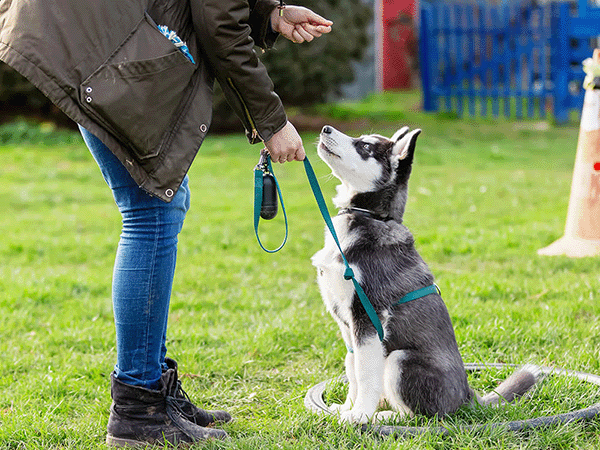
The Best Dog Trainers in the United States of 2025
This is a list of the top dog trainers in the United States, based on votes from the Sniffspot community and the general public.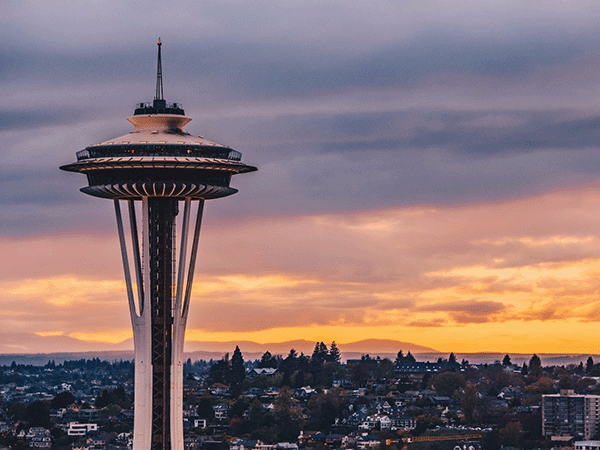
The Best Dog Trainers in Seattle, WA of 2025
This is a list of the top dog trainers in Seattle, WA, based on votes from the Sniffspot community and the general public.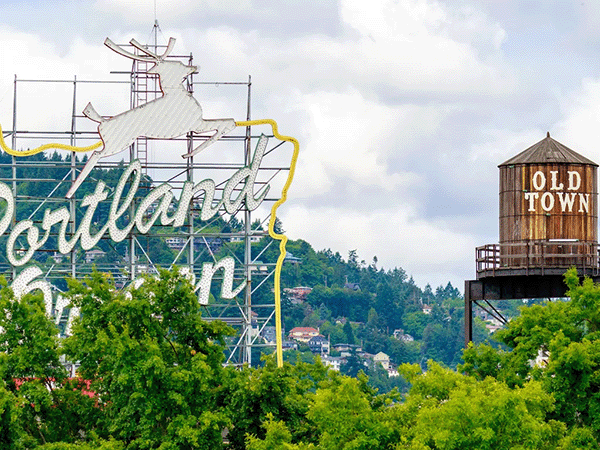
The Best Dog Trainers in Portland, OR of 2025
This is a list of the top dog trainers in Portland, OR, based on votes from the Sniffspot community and the general public.
The Best Dog Trainers in Los Angeles, CA of 2025
This is a list of the top dog trainers in Los Angeles, CA, based on votes from the Sniffspot community and the general public.
The Best Dog Trainers in New York, NY of 2025
This is a list of the top dog trainers in New York, NY, based on votes from the Sniffspot community and the general public.
City dog parks guides

Top 10 Indoor Dog Parks: A US Guide
Looking for a space to play with your dog no matter what the weather’s like outside? Look no further than our list of the best indoor dog parks in the United States! These climate-controlled spaces are growing in popularity as pet ownership increases throughout the country. As a bonus, many of them also offer dog training, boarding, grooming, or daycare services on the premises.

Best Dog Fields in the US: 25+ Wide-Open Spaces for Your Pup to Run Free
The best dog fields in the US offer something that traditional enclosed parks simply can't match: acres of open space where your pup can truly stretch their legs and run at full speed. From Colorado's 470-acre prairie meadows to Tennessee's award-winning "Outback," these wide-open spaces allow dogs to roam, explore, and exercise naturally while engaging instincts that cramped urban parks suppress.

Best Dog Parks in the US: Ultimate Guide to Public & Private Off-Leash Adventures
Is your pup giving you those pleading "let me run free" eyes? Whether you're a new dog parent or a seasoned pro looking for fresh adventures, finding the perfect off-leash paradise for your furry friend can feel ruff! From sun-soaked California beaches where your water-loving lab can make a splash to mountain trails in Vermont where your adventure buddy can chase every scent, we've sniffed out the 15 best dog parks across America.

Dog Parks Near Me: Las Vegas Edition
Looking for the perfect dog park near me in Las Vegas? You're in luck! This guide explores all the best options for your pup, from public dog parks to private dog parks near me on Sniffspot. We'll help you find the ideal spot for playtime, socializing, and fresh air. Plus, we'll cover essential etiquette and safety tips to ensure a happy visit for everyone. Get ready for some tail-wagging fun!

Top Sniffspot Locations: Find the Perfect Dog Park
Looking for the perfect dog park? Whether you need a wide-open public space or a private, fenced-in spot, this guide will help you find the best dog parks across the US. We'll cover top-rated public parks, the perks of private dog parks, and even explore Sniffspot locations – giving your pup a safe and fun place to play. Ready to find your dog's new favorite spot? Let's go!

Sniffspot: Portland's Best Private Dog Parks
Ready to discover Portland's best dog parks? Whether you're looking for a public park or the unique experience of a private Sniffspot, this guide has you covered. We'll help you find the perfect spot for your pup, with tips on what to bring, how to prepare, and even understanding dog body language. Plus, we'll explore some top Portland dog parks, including public and Sniffspot options, so you can plan your next dog-friendly adventure in the City of Roses.
Portland Dog Parks: Public & Private Options
This page is about public city dog parks and also includes Sniffspot private dog parks. Sniffspot is the largest network of private dog parks for rent in the world!
Small Dog Park Guide: Tips for Finding the Perfect Spot
Finding the perfect dog park for your small breed can be ruff! Big dog parks can be overwhelming, even dangerous, for little pups. This comprehensive guide helps you sniff out the best small dog parks for your pint-sized companion, covering everything from essential safety checklists to top recommendations for small dog parks across the US—including both public spots and private dog parks.
Dogs breeds

German Shepherd Dogs: Insights From Real Dog Owners
The German Shepherd Dog (GSDs) are known for their intelligence, loyalty, and striking appearance. They're also incredibly versatile, excelling as working dogs and devoted family companions. This guide covers everything you need to know about GSDs, from understanding their unique traits and rich history to practical advice on training and care. So, whether you're a seasoned GSD owner or just starting your research, let's explore this remarkable breed together.

Best Dog Fields in the US: 25+ Wide-Open Spaces for Your Pup to Run Free
The best dog fields in the US offer something that traditional enclosed parks simply can't match: acres of open space where your pup can truly stretch their legs and run at full speed. From Colorado's 470-acre prairie meadows to Tennessee's award-winning "Outback," these wide-open spaces allow dogs to roam, explore, and exercise naturally while engaging instincts that cramped urban parks suppress.

Labrador Retriever: Ultimate Guide by Owners
Discover the Labrador Retriever, a breed celebrated for its playful nature, affectionate temperament, and trainability. Labradors are known for their friendly demeanor and adaptability, making them perfect family companions and versatile working dogs. As one of the most popular types of retrievers, Labs are ideal companions for various lifestyles and are recognized by the American Kennel Club (AKC) as an excellent breed for families.

Golden Retriever Advice: The Complete Owner's Guide
Golden Retrievers: they're gorgeous, playful, and incredibly popular. But before you welcome one into your home, you need the right golden retriever advice. This guide draws on the wisdom of nearly 10,000 Golden Retriever owners, offering practical tips for caring for these affectionate dogs. From understanding their high energy levels to mastering grooming and training, we'll cover everything you need to know. So whether you're already a devoted Golden parent or just starting your research, get ready to learn how to give your furry friend the best possible care.

American Staffordshire Terrier: Your Complete Guide
Think American Staffordshire Terriers are tough? Think again. While their muscular build might intimidate some, these dogs are known for their playful and loyal personalities. This guide draws on the experience of nearly 10,000 AmStaff owners to reveal the truth about this often misunderstood breed. Want to learn more about caring for an American Staffordshire Terrier? You're in the right place.

Australian Shepherd Facts: Breed Info & Care Guide
Discover the Australian Shepherd, an AKC breed celebrated for its trainable, playful, and affectionate nature. Despite its name, the Australian Shepherd is actually a native breed to the United States, originally developed to breed on farms and ranches. Considered a medium dog, Australian Shepherds were bred for herding beginning in the 1950s. As one of the high-energy breeds, Aussies are known for their boundless energy and need for regular exercise, including aerobic exercise.

Essential Husky Facts for Owners: Breed Guide
Discover the Siberian Husky, a breed celebrated for its curious, intelligent, and loyal nature. Considered a medium-sized dog, Siberian Huskies were originally bred in Russia for sledding, beginning in the early 20th Century. Today, they're one of the most popular active breeds in North America.










